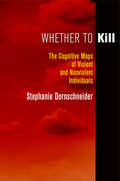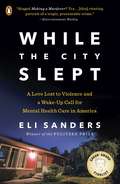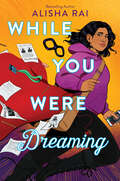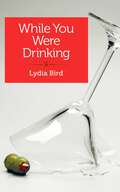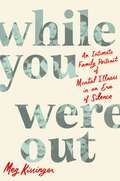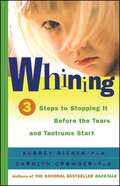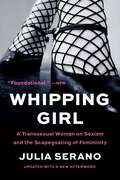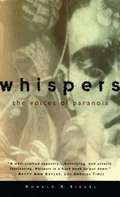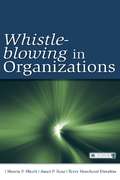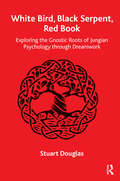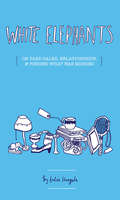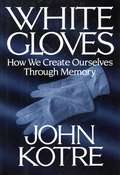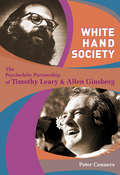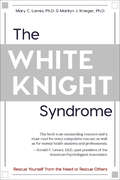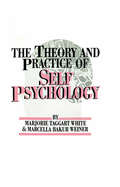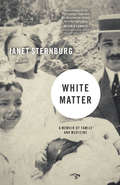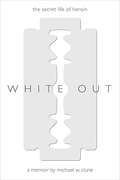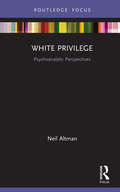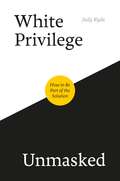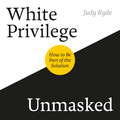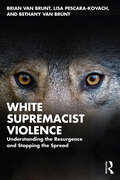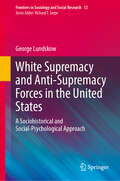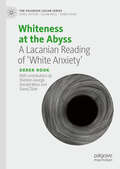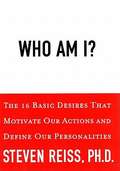- Table View
- List View
Whether to Kill: The Cognitive Maps of Violent and Nonviolent Individuals
by Stephanie DornschneiderWhat drives some to violence against the state while others, living in the same place at the same time, turn to nonviolent resistance? And in this age of Islamist terrorism and Islamophobia, does the practice of Islam encourage violence? Structural explanations of violence fail to answer these questions. In Whether to Kill, Stephanie Dornschneider applies the methodology of cognitive mapping to study the beliefs that motivate individuals to take up arms or engage in nonviolent activism. Using a double-paired comparison with control groups, Dornschneider conducted extensive ethnographic interviews with violent and nonviolent Muslims and non-Muslims in both Egypt and Germany, speaking with them about their lives and contexts and what drove them to resist the state. After coding their responses into cognitive maps, which make visible the connections between an individual's beliefs and decisions for behavior, Dornschneider used a computer model to analyze the huge number of possible factors driving people to choose or not choose violence, eventually identifying ten reasoning processes by which violent individuals can be differentiated from nonviolent ones.Whether to Kill takes a new approach to understanding terrorism. Through first-person accounts of those involved in both violent and nonviolent action against the state—from members of groups as diverse as the Muslim Brotherhood, al-Jihad, the Socialist German Student Union, and the Red Army Faction—then analyzing that data via cognitive mapping, Stephanie Dornschneider has opened up new perspectives on what drives people to—or away from—the use of political violence.
While the City Slept
by Eli SandersA Pulitzer Prize-winning reporter's gripping account of one young man's path to murder--and a wake-up call for mental health care in America On a summer night in 2009, three lives intersected in one American neighborhood. Two people newly in love--Teresa Butz and Jennifer Hopper, who spent many years trying to find themselves and who eventually found each other--and a young man on a dangerous psychological descent: Isaiah Kalebu, age twenty-three, the son of a distant, authoritarian father and a mother with a family history of mental illness. All three paths forever altered by a violent crime, all three stories a wake-up call to the system that failed to see the signs. In this riveting, probing, compassionate account of a murder in Seattle, Eli Sanders, who won a Pulitzer Prize for his newspaper coverage of the crime, offers a deeply reported portrait in microcosm of the state of mental health care in this country--as well as an inspiring story of love and forgiveness. Culminating in Kalebu's dangerous slide toward violence--observed by family members, police, mental health workers, lawyers, and judges, but stopped by no one--While the City Slept is the story of a crime of opportunity and of the string of missed opportunities that made it possible. It shows what can happen when a disturbed member of society repeatedly falls through the cracks, and in the tradition of The Other Wes Moore and The Short and Tragic Life of Robert Peace, is an indelible, human-level story, brilliantly told, with the potential to inspire social change.From the Hardcover edition.
While You Were Dreaming
by Alisha RaiIt’s a classic story: girl meets boy, girl falls for boy, boy finally notices girl when he sees her in a homemade costume. At least, that’s what Sonia Patil is hoping for when she plans to meet her crush at the local comic-con in cosplay. <P><P> But instead of winning her crush over, Sonia rescues him after he faints into a canal and, suddenly, everything changes. Since she was in disguise, no one knows who the masked do-gooder was . . .but everyone is trying to find out. Sonia can’t let that happen—her sister is undocumented, and the girls have been flying under the radar since their mother was deported back to Mumbai. <P><P> Sonia finds herself hiding from social media detectives and trying to connect with her crush and his family. But juggling crushes and a secret identity might just take superpowers. Can Sonia hide in plain sight forever?
While You Were Drinking: A Daughter's Journey
by Lydia BirdWhat can a daughter do when the mother she loves is bent on destroying herself? With lyricism and honesty, memoirist Lydia Bird chronicles the unlikely course of her mother&’s alcoholism—and the power and limitations of their bond. Through stories spanning four decades and three continents, Bird embarks on an unsparing quest to understand her past and find forgiveness. In the process, she paints an unforgettable portrait of addiction, betrayal, and the unexpected joy that can prevail on the far side of loss.
While You Were Out: An Intimate Family Portrait of Mental Illness in an Era of Silence
by Meg KissingerFrom award-winning journalist Meg Kissinger, a searing memoir of a family besieged by mental illness, as well as an incisive exploration of the systems that failed them and a testament to the love that sustained them.Growing up in the 1960s in the suburbs of Chicago, Meg Kissinger’s family seemed to live a charmed life. With eight kids and two loving parents, the Kissingers radiated a warm, boisterous energy. Whether they were spending summer days on the shores of Lake Michigan, barreling down the ski slopes, or navigating the trials of their Catholic school, the Kissingers always knew how to live large and play hard.But behind closed doors, a harsher reality was unfolding—a heavily medicated mother hospitalized for anxiety and depression, a manic father prone to violence, and children in the throes of bipolar disorder and depression, two of whom would take their own lives. Through it all, the Kissingers faced the world with their signature dark humor and the unspoken family rule: never talk about it.While You Were Out begins as the personal story of one family’s struggles then opens outward, as Kissinger details how childhood tragedy catalyzed a journalism career focused on exposing our country’s flawed mental health care. Combining the intimacy of memoir with the rigor of investigative reporting, the book explores the consequences of shame, the havoc of botched public policy, and the hope offered by new treatment strategies. Powerful, candid and filled with surprising humor, this is the story of one family’s love and resilience in face of great loss.
Whining
by Audrey Ricker Carolyn CrowderAre you ready to end the whining wars in your house? It starts with a whimper, an insistent demand, or a certain tone of voice that every parent recognizes with dread -- your child is starting to whine, and if you don't respond properly you'll have a full-blown tantrum or argument on your hands. Kids of all ages know that whining works when they want that extra hour of TV, the unplanned toy purchase, or a later curfew. But stopping such behavior without giving in to a child's demands isn't easy, and if left unchecked, whining can lead to constant disruptions at home, in school, or anywhere else your child chooses. Now the same authors who solved a common parenting problem in the national bestseller Backtalk present three proven methods for putting an end to whining, as well as information on * The best ways to react when your child whines in a public place * Why negotiating and giving in never work -- and what you should do instead * What kids are really trying to tell you when they whine * Why whining can lead to poor self-esteem and unsatisfying social relationships -- which can follow your child into adulthood -- and what you can do about it now * How to clearly, respectfully indicate to your child what's important to you and why whining will no longer work as a means of communication Filled with numerous real-life examples, encouraging advice, and simple steps you can start using immediately, this invaluable guide will help you end the cycle of giving in to whining only to have your child do it again, and instead replaces misbehavior with effective, meaningful, and loving parent-child communication.
Whipping Girl: A Transsexual Woman on Sexism and the Scapegoating of Femininity
by Julia SeranoThis classic manifesto is &“a foundational text for anyone hoping to understand transgender politics and culture in the U.S. today.&” (NPR)*Named as one of 100 Best Non-Fiction Books of All Time by Ms. Magazine* In Whipping Girl, biologist and trans activist Julia Serano shares her experiences and insights—both pre- and post-transition—to reveal the ways in which fear, suspicion, and dismissiveness toward femininity shape our attitudes toward trans women, as well as gender and sexuality as a whole. Serano's well-honed arguments and pioneering advocacy stem from her ability to bridge the gap between the often-disparate biological and social perspectives on gender. In this provocative manifesto, she exposes how deep-rooted the cultural belief is that femininity is frivolous, weak, and passive. In addition to debunking popular misconceptions about being transgender, Serano makes the case that today's feminists and transgender activists must work to embrace and empower femininity—in all of its wondrous forms.
Whispers: The Voices of Paranoia
by Ronald K. SiegelIn a mesmerizing journey into mental illness, the author of Intoxication and Fire in the Brain captures the suspicion, terror, and rage that possess the minds of paranoids. "Horrifying and utterly fascinating . . . a hard book to put down". --Bettyann Kline, Los Angeles Times.
Whistle-Blowing in Organizations
by Marcia P. Miceli Janet Pollex Near Terry M. DworkinThis is a research-based book on whistle-blowing in organizations. The three noted authors describe studies on this important topic and the implications of the research and theory for organizational behavior, managerial practice, and public policy. In the past few years there have been critical developments, including corporate scandals, which have called public attention to whistle-blowing and have led to the first comprehensive federal legislation to protect private sector whistle-blowers (the Sarbanes-Oxley Act). This book is the first to integrate these new developments in an analytic and empirically grounded approach to whistle-blowing in organizations.
White Bird, Black Serpent, Red Book: Exploring the Gnostic Roots of Jungian Psychology through Dreamwork
by Stuart DouglasThis book examines the influence of Gnostic philosophy on Jungian psychology as indicated by Jung's essay, 'The Transcendent Function' (1916), and his Gnostic-inspired treatise, The Seven Sermons to the Dead (also written in 1916). Relevant and timely due to the relatively recent publication of Jung's The Red Book, the hypothesis of this work is that the Seven Sermons is the mythopoetic, metaphysical twin of 'The Transcendent Function' and that these texts can be considered as two sides of the same coin. The Seven Sermons formed a prelude to everything Jung was to communicate about the unconscious-in other words, an embryonic form of the principal tenets of analytical psychology can be found in a Gnostic-inspired text. As Gnostic philosophy was the inspiration for both texts, this book also highlights correspondences between both of Jung's works and the Gnostic texts of the Nag Hammadi Library, paying particular attention to the theme of the opposites-arguably the crucial theme at the very heart of Jung's psychology.
White Elephants: On Yard Sales, Relationships, and Finding What Was Missing (Real World Ser.)
by Katie HaegeleWhite elephants are the odd, old, and discarded things that end up at yard sales and flea markets-and Katie Haegele loves them all. Well, an awful lot of them, anyway.<P><P> She lives a few blocks from the house she grew up in, and every summer she and her mother scour the neighborhood tag sales, looking for treasure. In this unusual, touching memoir, she chronicles the places they go and the things they find there, describing every detail in her singular, charming voice. In the end she finds more than just ugly table lamps and frilly aprons, ultimately discovering a real friendship with her mother, a deeper connection to her father, whose death left a hole in her life-and even a bit of romance.
White Gloves: How We Create Ourselves Through Memory
by John KotreMost of us think of memory as a fixed, unchanging substance that exists permanently in our mind and can be called upon at will. But research shows that this conception is far from the truth. We are constantly rewriting our memories and, in the process, creating ever new personal histories, illustrating that our memory operates in very complex and sometimes puzzling ways.
White Hand Society
by Peter ConnersIn 1960 Timothy Leary was not yet famous-or infamous-and Allen Ginsberg was both. Leary, eager to expand his psychedelic experiments at Harvard to include accomplished artists and writers, knew that Ginsberg held the key to bohemia's elite. "America's most conspicuous beatnik" was recruited as Ambassador of Psilocybin under the auspices of an Ivy League professor, and together they launched the psychedelic revolution and turned on the hippie generation. A who's who of artists, pop culture, and political figures people this story of the life, times, and friendship of two of the most famous, charismatic, and controversial members of America's counterculture.Peter Conners is the author of Growing Up Dead, The Hallucinated Confessions of a Teenage Deadhead.
The White Knight Syndrome: Rescuing Yourself from Your Need to Rescue Others
by Mary C. Lamia Marilyn J. KriegerBreak the pattern of losing yourself in other people&’s problems with this &“outstanding resource and must-read for every compulsive rescuer&” (Ronald F. Levant, Ed. D.).Are you attracted to needy, damaged, or helpless people? Are you overly involved in your partner's problems? Are you hungry for constant reassurance in relationships? Do you try to &“save&” people from themselves?In legends and fairytales, the white knight rescues the damsel in distress, falls in love, and saves the day. Real-life white knights are men and women who enter into romantic relationships with damaged and vulnerable partners, hoping that love will transform their partner&’s behavior or life. It&’s a relationship pattern that seldom leads to a storybook ending.Hoping to receive validation and love from their partners, white knights only cheat themselves out of emotionally healthy relationships. If this sounds like you, it's time to come to your own rescue. With engaging insight and informative case studies, The White Knight Syndrome is a guide to understanding and resolving the white knight syndrome in yourself.
White,M. Weiner,M. The Theory And Practice Of Self Psycholog
by M. WhiteFirst published in 1987. Routledge is an imprint of Taylor & Francis, an informa company.
White Matter
by Janet SternburgWhite Matter: A Memoir of Family and Medicine is the story of a Bostonian close-knit Jewish working-class family of five sisters and one brother and the impact they and their next generation endured due to the popularization of lobotomy during the 20th century. When Janet Sternburg's grandfather abandoned his family, and her uncle, Bennie, became increasing mentally ill, Sternburg's mother and aunts had to bind together and make crucial decisions for the family's survival. Two of the toughest familial decisions they made were to have Bennie undergo a lobotomy to treat his schizophrenia and later to have youngest sister, Francie, undergo the same procedure to treat severe depression. Both heartrending decisions were largely a result of misinformation disseminated that popularized and legitimized lobotomy.Woven into Sternburg's story are notable figures that influenced the family as well as the entire medical field. In 1949, Egas Moniz was awarded the Nobel Prize in Medicine for developing the lobotomy, and in the three years that followed his acceptance of the award, more Americans underwent the surgery than during the previous 14 years. By the early 1950s, Walter Freeman developed an alternate technique for lobotomy, which he proselytized during his travels throughout the country in a van he dubbed the "Lobotomobile."The phrase "prefrontal lobotomy" was common currency growing up in Janet Sternburg's family and in White Matter she details this scientific discovery that disconnects the brain's white matter, leaving a person without feelings, and its undeserved legitimization and impact on her family. She writes as a daughter consumed with questions about her mother and aunts-all well meaning women who decided their siblings' mental health issues would be best treated with lobotomies. By the late 1970s, the surgical practice was almost completely out of favor, but its effects left patients and their families with complicated legacies as well as a stain on American medical history. Every generation has to make its own medical choices based on knowledge that will inevitably come to seem inadequate in the future. How do we live with our choices when we see their consequences?
White Out: The Secret Life of Heroin
by Michael Wesley CluneClune’s gripping account of life inside the heroin underground reads like no other, as we enter the mind of the addict and navigate the world therein.How do you describe an addiction in which the drug of choice creates a hole in your memory, a “white out,” so that every time you use it is the first time--new, fascinating, and vivid? Michael W. Clune’s original, edgy yet literary telling of his own story takes us straight inside such an addiction--what he calls the Memory Disease.With black humor and quick, rhythmic prose, Clune’s gripping account of life inside the heroin underground reads like no other, as we enter the mind of the addict and navigate the world therein. Clune whisks us between the streets of Baltimore and the university campus, revealing his dual life while a graduate student teaching literature. We spiral downward with Clune--from nodding off in an abandoned row-house with a one-armed junkie and a murderous Jesus freak to scanning a crowded lecture hall for an enemy with a gun.After experiencing his descent into addiction, we go with him through detox, treatment, and finally into recovery as he returns to his childhood home and to the world of color. It is there that the Memory Disease and his heroin-induced white out begins to fade.
White Privilege: Psychoanalytic Perspectives (Psychoanalysis in a New Key Book Series)
by Neil AltmanWhite Privilege: Psychoanalytic Perspectives looks at race and the significant role it plays in society and in clinical practice. Much of the effort going into racial consciousness-raising rests on the concept of unearned "white privilege". In this book, Neil Altman looks deeply into this notion, suggesting that there are hidden assumptions in the idea of white privilege that perpetuate the very same racially prejudicial notions that are purportedly being dismantled. The book examines in depth the structure of racial categories, polarized between white and black, that are socially constructed, resting on fallacious ideas of physical or psychological differences among peoples. Altman also critically examines such related concepts as privilege, guilt, and power. It is suggested that political positions are also artificially polarized into categories of "liberal", "left" and "conservative", "right", in ways that contribute to stereotyping between people with different political leanings, foreclosing mutual respect, dialogue, and understanding. Finally, White Privilege: Psychoanalytic Perspectives explores the implications for the theory and practice of psychoanalytic psychotherapy, discussing these ideas in detail and depth with clinical illustrations. Drawing on Altman’s rich clinical experience and many years of engaging with racial and societal problems, this book offers a new agenda for understanding and offering analytic practice in contemporary society. It will appeal to clinicians, psychoanalytic therapists, and anyone with an interest in social problems and how they manifest in society and in therapy today.
White Privilege Unmasked: How to Be Part of the Solution
by Judy RydeAll white people understand cultural differences from a platform of relative privilege, affecting their personal and professional interactions. How should they respond when confronted with this knowledge? This introductory book looks at the concept of whiteness, and shows how individuals can 'unmask' their own whiteness and take meaningful steps to break down unconscious bias and structural racism.Exploring how colonial history resulted in white privilege, this book examines how that privilege manifests today in a culturally diverse world, and the links between the rise in far-right politics and anti-immigration rhetoric that led to Brexit and Donald Trump's election. It looks at the pressures on privilege and white populations, with candid reflections on how even well-meaning white people may project unconscious bias in their everyday lives. There are also dedicated chapters on training to raise awareness of white privilege in professional organizations.
White Privilege Unmasked: How to Be Part of the Solution
by Judy RydeA primer on understanding white privilege, with strategies for breaking down race barriers in professional organizations.All white people understand cultural differences from a platform of relative privilege, affecting their personal and professional interactions. How should they respond when confronted with this knowledge? This introductory book looks at the concept of whiteness, and shows how individuals can 'unmask' their own whiteness and take meaningful steps to break down unconscious bias and structural racism.Exploring how colonial history resulted in white privilege, this book examines how that privilege manifests today in a culturally diverse world, and the links between the rise in far-right politics and anti-immigration rhetoric that led to Brexit and Donald Trump's election. It looks at the pressures on privilege and white populations, with candid reflections on how even well-meaning white people may project unconscious bias in their everyday lives. There are also dedicated chapters on training to raise awareness of white privilege in professional organizations.(P)2019 Hodder & Stoughton Limited
White Supremacist Violence: Understanding the Resurgence and Stopping the Spread
by Brian Van Brunt Lisa Pescara-Kovach Bethany Van BruntWhite Supremacist Violence is a powerful resource for education and mental health professionals who are developing the tools and skills needed to slow the progress of the fast-growing hate movement in the United States. Chapters immerse the reader in a hybrid of research, historical reviews, current events, social media and online content, case studies, and personal experiences. The first half of the text explores the ways in which individuals become increasingly indoctrinated through the exploitation of cognitive openings, perceptions of real or imagined marginalization, and exposure to political rhetoric and manipulation, as well as an examination of social media and commerce sites that create a climate ripe for recruitment. The second half of the book walks the reader through three case studies and offers treatment considerations to assist mental-health professionals and those developing education and prevention-based programming. White Supremacist Violence gives readers useful perspectives and insights into the white supremacy movement while offering clinicians, threat-assessment professionals, and K-12 and university educators and administrators practical guidance on treatment and prevention efforts.
White Supremacy and Anti-Supremacy Forces in the United States: A Sociohistorical and Social-Psychological Approach (Frontiers in Sociology and Social Research #12)
by George LundskowThis book applies the most recent research in social psychology to decisive historical events that arguably built white supremacy as a cultural force, institutional system, and dominant social character. Simultaneously, the discussion considers the progressive counter-forces that have and continue to challenge white supremacy, and how this dialectical battle has brought the United States to the polarizations of the present day. The book builds a four-part argument. First, it considers the origins of white supremacy in the United States, and how some people uphold it today. Second, it discusses personality types that find white supremacy appealing. Third, it lays out the sociohistorical patterns that promoted white supremacy, rewarded people who practiced it, and created generations of people who find meaning and comfort in racist, misogynist, and heteronormative domination. Fourth, it discusses the social counterforces that challenge white supremacy and links these to personality types as well. Overall, the book examines how social character correlates with differing personality types, resulting in very different social movements, cultural expressions, political activities, and daily interactions.
Whiteness at the Abyss: A Lacanian Reading of ‘White Anxiety’ (The Palgrave Lacan Series)
by Derek Hook&‘Whiteness&’ is an omnipresent term within research on race and racism. This book differs from existing conceptualizations by adopting a psychoanalytic line of approach and by directing its attention to a particular socio-historical instantiation of whiteness—the investments, fantasies and fears apparent within (post) apartheid South African contexts. It foregrounds the notion of &‘white anxiety&’, which is conceptualized not only via notions of psychical temporality, but with reference to the dystopian visions of the future, ideas of inter-generational guilt, and fantasies of demise. To posit an imagined &‘end to whiteness&’ is not, of course, an uncontroversial gesture; the closing section of the book surveys the key themes—antisemitism, white Nationalism, the trope of the race traitor—in online attacks the author was subjected to. This compelling work will appeal to all those with an interest in psychoanalytic approaches to race and racism, and to anyone working in the areas of critical race and whiteness studies.
Who am I?
by Steven ReissWhat do we want? What makes us tick? From acceptance to vengeance to curiosity, this book explains the 16 basic and universal desires that shape our behavior-and shows how the ways we prioritize them determines our personalities. Grounded in up-to-date psychological research, this book can helpparents comprehend their children's needs and behaviorcouples understand each other betteremployers motivate their employees employees become more effective in their workYOU achieve greater satisfaction and happiness in life
Who am I?: 16 Basic Desires that Motivate Our Actions Define Our Persona
by Steven ReissWhat do we want? What makes us tick? From acceptance to vengeance to curiosity, this book explains the 16 basic and universal desires that shape our behavior--and shows how the ways we prioritize them determines our personalities. Grounded in up-to-date psychological research, this book can help parents comprehend their children's needs and behavior couples understand each other better employers motivate their employees employees become more effective in their work YOU achieve greater satisfaction and happiness in life
